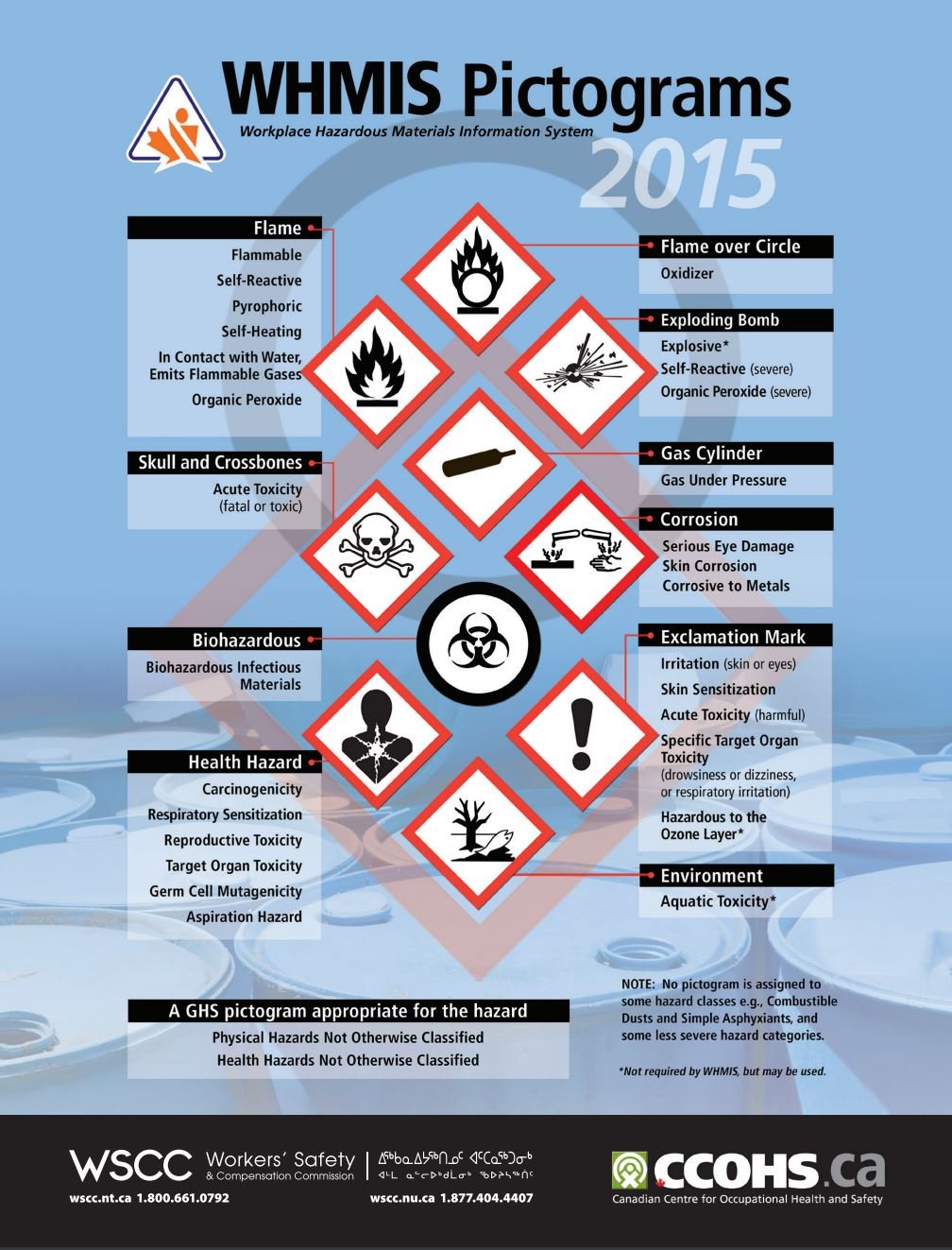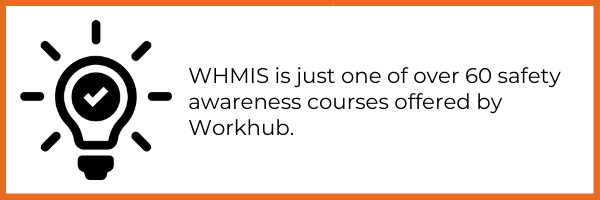Effective December 1st, 2018, only a couple of days from now, WHMIS 1988 will be obsolete and the new WHMIS 2015 standard will be enforced across Canada. Here is what you need to know before the changes come into effect.
The new WHMIS 2015 standard is a combination of updated WHMIS 1988 regulations, as well as the integration of the Globally Harmonized System of Classification and Labelling of Chemicals (GHS). While many workplaces have spent the last 3 years working towards conformity with the new WHMIS standards, there can be many reasons why something gets left out or forgotten, and we want everyone to be able to say they are 100% compliant with the new regulations, so here is a quick recap of what you need to know about WHMIS 2015:
Suppliers, manufacturers, importers, and distributors
There may be different people involved in getting a product from fabrication to destination, and each of them have different roles under the new WHMIS.
- Supplier: a person who, in the course of business, sells or imports a hazardous product
- Manufacturer: a supplier who, in the course of business in Canada, manufactures, produces, processes, packages or labels a hazardous product and sells it
- Importer: a supplier who brings a hazardous product into Canada, but does not sell the product. If you are an employer who imports a hazardous product only for use in your own workplace, you are considered to be the importer and are responsible for compliance with all WHMIS supplier requirements
- Distributor: a Canadian supplier to whom a hazardous product was sold, and who then resells the hazardous product without modifying it in any way. If a distributor does modify a hazardous product that they purchased (for example, by repackaging or relabeling it) and subsequently sells it, then the distributor meets the definition of a “manufacturer””.
Which products are covered?
The Hazardous Products Regulations set out specific hazard classification criteria that determines the class and category of hazardous products. This also determines which WHMIS/GHS pictograms must be displayed on labels and Safety Data Sheets (more on these later).
The Government of Canada WHMIS 2015-New Hazardous Products Regulations Requirements defines and explains these hazard classes and their requirements in a lot more detail, but for the purposes of this post, we'll just give you a quick overview of which types of products belong in each category.

All hazardous products used in the workplace are covered by the WHMIS regulations, and a WHMIS program, including education and training, must be in place. However, these do not come without a few exceptions. Certain types of products are exempt from needing a WHMIS label and SDS, but employers must still provide information and training on how to use and store them, as well as any possible health affects asssociated with them. The exclusions under the updates WHMIS are:
- Explosives as defined in the Explosives Act.
- Cosmetic, device, drug or food as defined in the Food and Drugs Act.
- Pest control products as defined in the Pest Control Products Act.
- Consumer products as defined in the Canada Consumer Product Safety Act.
- Wood or products made of wood.
- Nuclear substances within the meaning of the Nuclear Safety and Control Act, that are radioactive.
- Hazardous waste being a hazardous product that is sold for recycling or recovery, or is intended for disposal.
- Tobacco and tobacco products as defined in the Tobacco Act.
- Manufactured articles.
Goodbye MSDS, Hello SDS
This is the last major change we are going to highlight in this post.
A Safety Data Sheet (SDS) is very similar to the Material Safety Data Sheet (MSDS). Their purpose is to provide a summary of the hazards and safety precautions associated with the product.
So how have things changed? It has more to do with the validity of the SDS than the actual information.
Under the old legislation, MSDS were considered to be up to date and current if they were less than 3 years old. Unfortunately, when MSDS were expired and no changes had been made to the product, purchasers were not always supplied with more current paperwork, leaving them non compliant under WHMIS 1988.
Under the new WHMIS regulations, suppliers are responsible for making sure that all products are sold with a current SDS and that the information is updated as soon as they are made aware of any changes. These modifications must then be passed along to purchasers within 90 days.
We think there are more than a few companies who built their brand names around MSDS who have a have a hard time ahead of them when it comes to changing their brand.
Safety is everyone's responsibility
While the system hasn't changed too drastically, there are still a few things that will take some time to get used to. However, if everyone does their part and embraces their responsibilities under the new WHMIS 2015 regulations, workplaces across Canada, and everyone in them, will be a little bit safer than yesterday.



Let Us Know What You Thought about this Post.
Put your Comment Below.